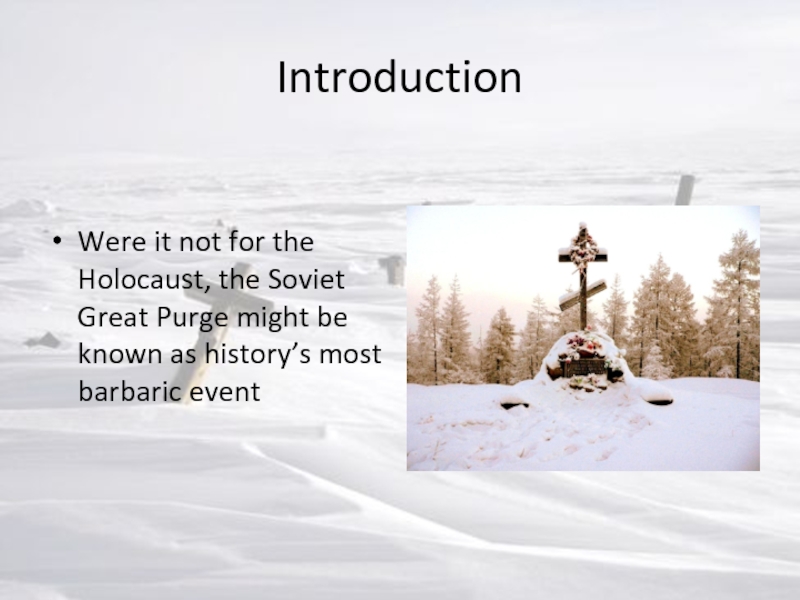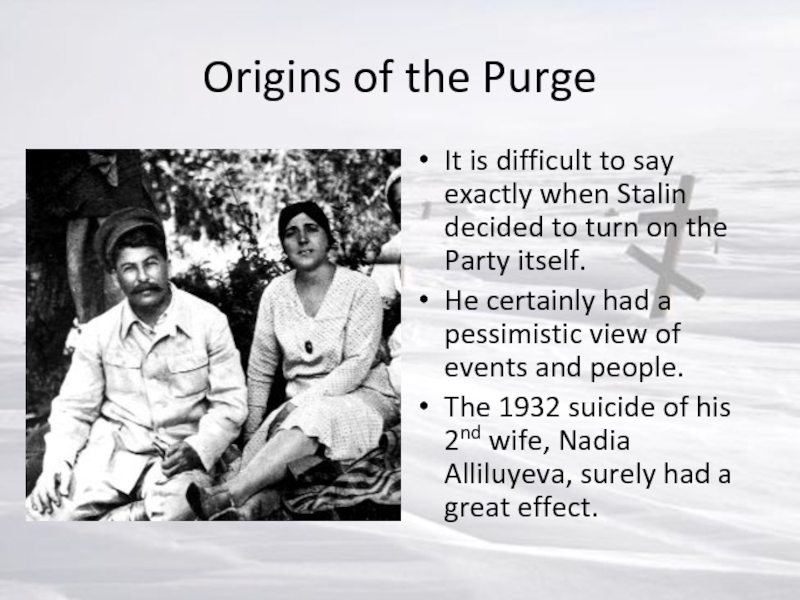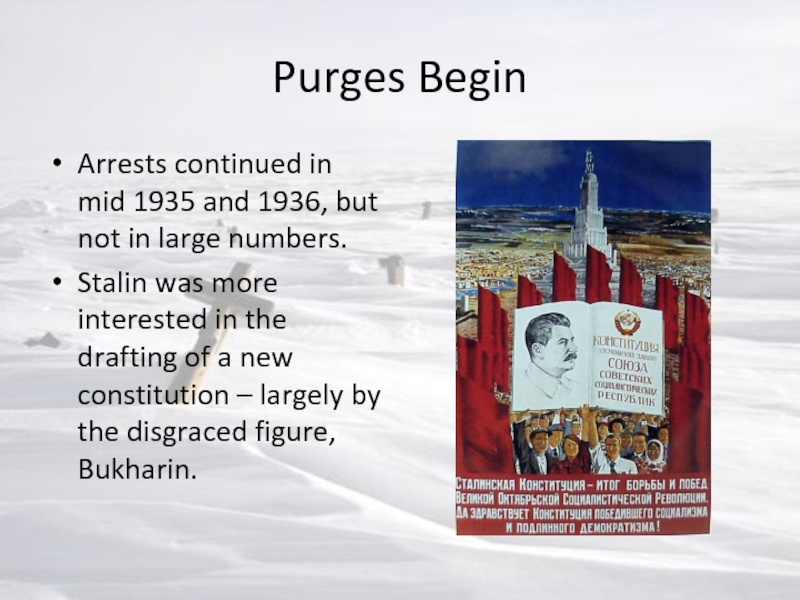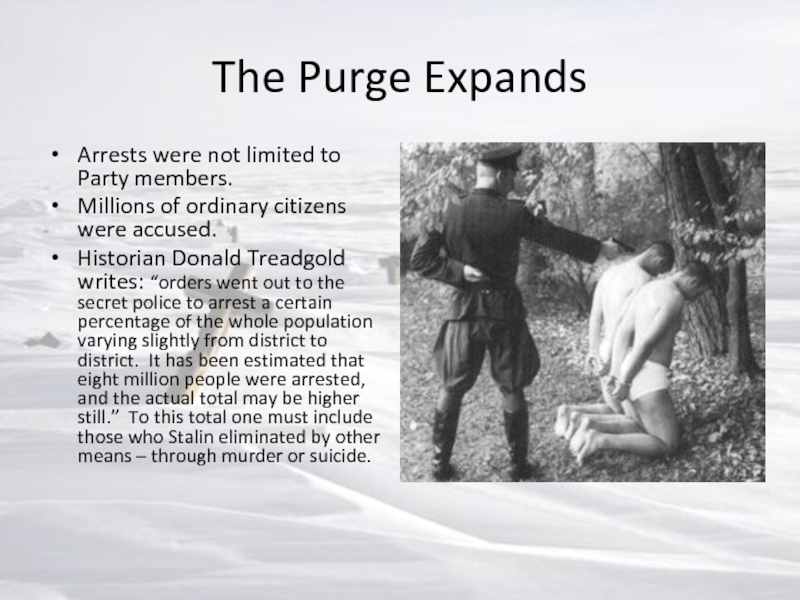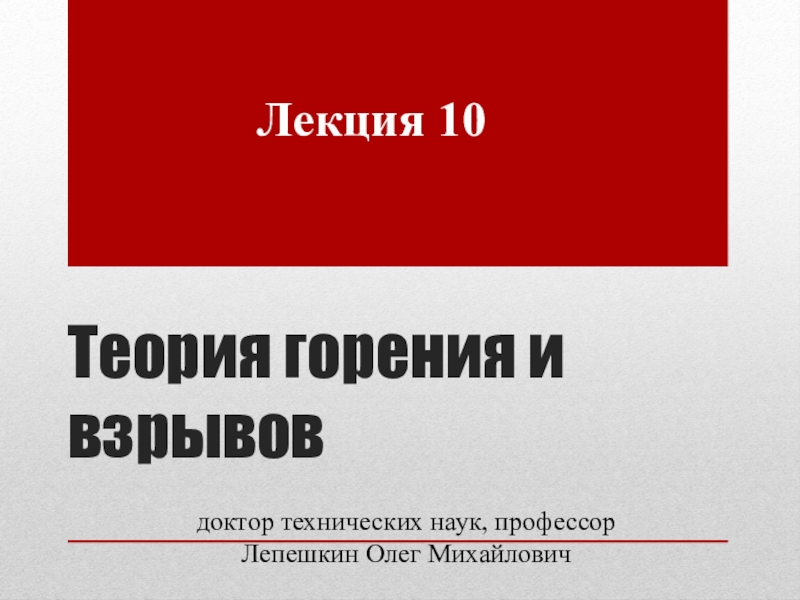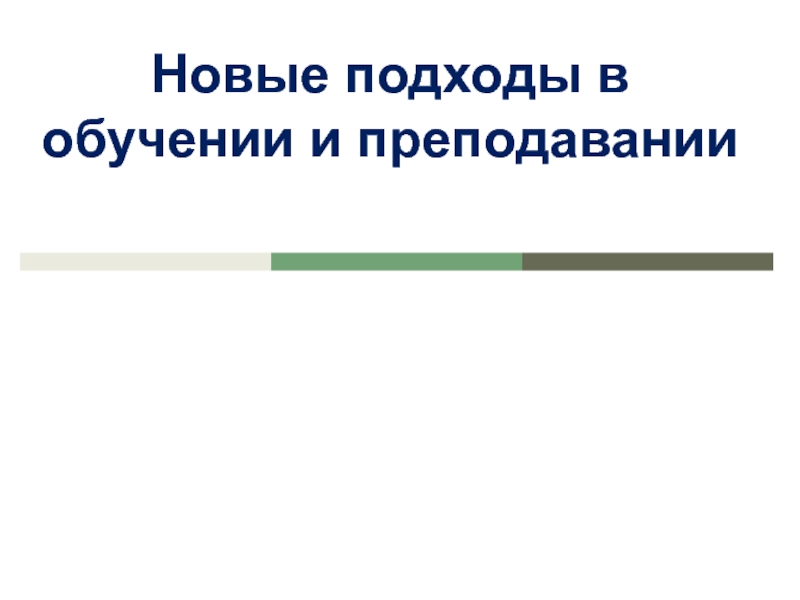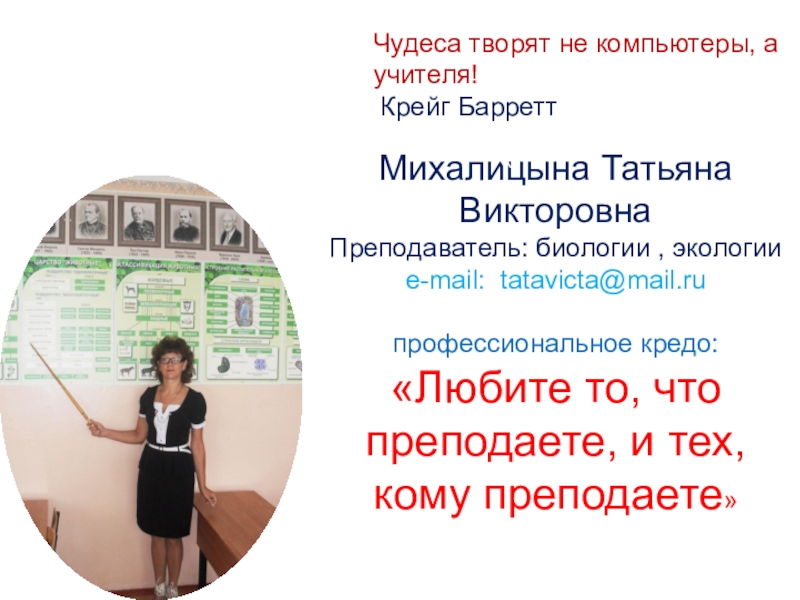Разделы презентаций
- Разное
- Английский язык
- Астрономия
- Алгебра
- Биология
- География
- Геометрия
- Детские презентации
- Информатика
- История
- Литература
- Математика
- Медицина
- Менеджмент
- Музыка
- МХК
- Немецкий язык
- ОБЖ
- Обществознание
- Окружающий мир
- Педагогика
- Русский язык
- Технология
- Физика
- Философия
- Химия
- Шаблоны, картинки для презентаций
- Экология
- Экономика
- Юриспруденция
The Great Purge
Содержание
- 1. The Great Purge
- 2. IntroductionWere it not for the Holocaust, the
- 3. Interpretations The Official Soviet View to
- 4. Interpretations The Soviet View from 1956 to
- 5. Interpretations Since Gorbachev & GlasnostStalin made dreadful
- 6. Interpretations Western PerceptionsSome Westerners claim the purges
- 7. Interpretations Western PerceptionsOthers see a conspiracy at
- 8. Interpretations Western PerceptionsStill others point to the
- 9. Origins of the PurgeIt is difficult to
- 10. Nadya’s SuicideEven she had criticized his policies
- 11. 1934 Party ConferenceNonetheless, there seemed no reason
- 12. Kirov’s MurderSergei Kirov, Stalin’s apparent favourite, was
- 13. Kirov’s MurderHundreds of “Kirov’s murderers” were rounded
- 14. Purges BeginArrests continued in mid 1935 and
- 15. Show TrialsIn August, 1936 show trials opened
- 16. Show TrialsNext it was announced that the
- 17. Show TrialsThe third series of trials proved
- 18. Show TrialsArrests developed momentum as the trials
- 19. The Purge ExpandsArrests were not limited to
- 20. Willing ConfessionsWhat astounded the outside world was
- 21. Скачать презентанцию
IntroductionWere it not for the Holocaust, the Soviet Great Purge might be known as history’s most barbaric event
Слайды и текст этой презентации
Слайд 2Introduction
Were it not for the Holocaust, the Soviet Great Purge
might be known as history’s most barbaric event
Слайд 3Interpretations
The Official Soviet View to 1956
The closer Soviet society
moved to socialism, the more desperate the class enemy became.
They would do anything to hold back the building of socialism: sabotage, murder of Soviet leaders, collaboration with the secret services of Germany and Japan. As a result, the Party had to fight back. The class struggle sharpened.Слайд 4Interpretations
The Soviet View from 1956 to Gorbachev
Stalin did a good
job fighting anti-party elements in the 1920s and early 1930.
Hew
was also justified in collectivization and industrialization, but owing to problems that arose in these processes and the negative influence of Beria, Stalin became isolated from the party and began persecuting its leading members who became victims of Stalin’s cult of personalityСлайд 5Interpretations
Since Gorbachev & Glasnost
Stalin made dreadful errors, falsely accusing Party
members of crimes they did not commit.
Post communist Russians are
divided about him.Some consider him a monster.
Others feel he may have committed excesses, but only for the greater good of the country.
Слайд 6Interpretations
Western Perceptions
Some Westerners claim the purges were a manifestation of
Stalin’s paranoia – perhaps arising out of syphilis.
Others say that
paranoia was indeed the cause – but that it came out of a deep inferiority complex.Слайд 7Interpretations
Western Perceptions
Others see a conspiracy at work.
The German Gestapo created
havoc by producing convincing-looking documents showing Soviet leaders plotting with
the Germans to overthrow Stalin – something confirmed to him by the Czech secret service.Слайд 8Interpretations
Western Perceptions
Still others point to the severe strains of collectivization
and industrialization in the nation and in the party –
even among his own followersAt one stage he even found himself within a minority on the Central Committee and was almost ousted.
This theory insists he turned against those who he felt betrayed him. In a secret ballot of Party members in 1934, Stalin found others were more popular than himself – including his protoge, Kirov – who Stalin then had killed.
Слайд 9Origins of the Purge
It is difficult to say exactly when
Stalin decided to turn on the Party itself.
He certainly had
a pessimistic view of events and people.The 1932 suicide of his 2nd wife, Nadia Alliluyeva, surely had a great effect.
Слайд 10 Nadya’s Suicide
Even she had criticized his policies and the terror
they brought.
After a family dispute in which he publicly hurled
abuse at her, she went home and shot herself.Stalin was badly shaken – he offered his resignation, but they did not know how to respond and he was persuaded to stay on.
After this point he seemed to lose trust in even his closest friends.
Слайд 111934 Party Conference
Nonetheless, there seemed no reason to act.
Stalin announced
that “there is nothing to prove and, it seems, no
one to fight.”Had not the peasants and workers been beaten into submission?
Even the Politburo now consisted of Stalin’s – but now some of them began to echo the concerns of the beaten opposition.
Слайд 12Kirov’s Murder
Sergei Kirov, Stalin’s apparent favourite, was dispatched to Leningrad
to “clean up” Zinoviev supporters there.
On December 1, 1934 he
was assassinated by a supposed supporter of Zinoviev.Hardliner, Andrei Zhdanov, was dispatched to replace Kirov.
Слайд 13Kirov’s Murder
Hundreds of “Kirov’s murderers” were rounded up and sent
to Sibertia.
Kamenev & Zinoviev themselves were sentenced to long terms
for abetting the murder.Officially, a grief-stricken Stalin allowed a reign of terror to begin. Khruschev, in his secret 1956 speech, hinted that Stalin ordered the murder himself.
Слайд 14Purges Begin
Arrests continued in mid 1935 and 1936, but not
in large numbers.
Stalin was more interested in the drafting of
a new constitution – largely by the disgraced figure, Bukharin.Слайд 15Show Trials
In August, 1936 show trials opened of 16 old
Bolsheviks – including Kamenev and Zinoviev.
The Defendants were all convicted
and shot.Слайд 16Show Trials
Next it was announced that the 16 implicated others,
including Bukharin, Rykov and Tomsky, though the Central Committee rejected
the claim.In January, 1937 trials began for 17 lesser figures.
The accused confessed to even the wildest claims against them and were shot.
Слайд 17Show Trials
The third series of trials proved the most dramatic
and bizarre.
The accused included:
All of Lenin’s Politburo except Stalin.
Rykov, a
former Premier.Bukharin.
Tukhachevsky, ex-Chief of the General Staff.
Tomsky, ex-Chief of Trade Unions.
Trotsky
Слайд 18Show Trials
Arrests developed momentum as the trials began.
They did not
end with the elimination of the old Bolsheviks. They included:
70%
of the 1934 Central Committee.Most high ranking officers and 24% of the military officer corps.
90% of trade union officials.
Most Soviet ambassadors to Europe and Asia.
Managers, intellectuals and Party and Comintern functionaries.
Слайд 19The Purge Expands
Arrests were not limited to Party members.
Millions of
ordinary citizens were accused.
Historian Donald Treadgold writes: “orders went out
to the secret police to arrest a certain percentage of the whole population varying slightly from district to district. It has been estimated that eight million people were arrested, and the actual total may be higher still.” To this total one must include those who Stalin eliminated by other means – through murder or suicide.Слайд 20Willing Confessions
What astounded the outside world was the readiness of
purge victims to confess to even the most ridiculous accusations.
Independent investigations showed many charges to be “physically impossible, meeting at hotels long since dismantled, landing at airports where no such planes has landed and so forth.”

